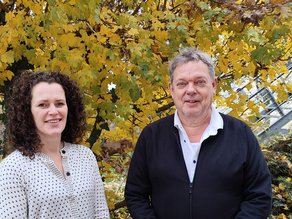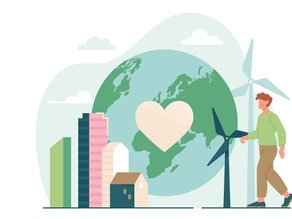What is renewability?
The term 'renewability' often appears in policy documents. To avoid differences in interpretation, clear definitions are important.

This article summarises the main information currently available on this.
This information is based on:
- BRL 7010
- NEN-EN15804+2012+A2:2019
- Renewable Resources - Agrodome (click to go to the report)
Definition of renewable content
The applied percentage of renewable raw materials can be divided into renewable raw materials of abiotic origin, such as Dutch river clay, and raw materials of biotic origin, such as raw materials from plants, trees and animals. (BRL 7010)
Definition of renewable raw material
Raw material from a source that is grown, naturally replenished or naturally cleaned on a human time scale.
- Note 1: A renewable source may be depleted, but it can still last indefinitely with good stewardship. Examples include: trees in the forest, grasses in grassland, fertile soil. (EN15804+A2)
- Note 2: Raw materials that become renewable through engineering, such as recycling, are not considered naturally growing or purifying raw materials. (EN15804+A2)
- Note 3: In this context, human scale refers more to the average lifespan of a human being than to the period of time over which humans exist. (EN15804+A2)
Renewable materials
Materials of regrowable, biological origin, excluding material embedded in geological formations and/or fossilised material. Recoverable, abiotic materials, provided they are replenished or purified by natural ecosystems on a human time scale (75-100 years).
(Agrodome, 2022)
| Renewable materials | |
|---|---|
| Materials of regrowable, biological origin, excluding material embedded in geological formations and/or fossilised material. |
Recoverable, abiotic materials, provided they are replenished or purified by natural ecosystems on a human time scale (75-100 years). |
(Agrodome, 2022)
Additional guidelines
For proper application of renewable materials, two additional guidelines can be identified. Namely:
- sustainable extraction
- biodiversity
3.1. Sustainable extraction
To keep the extraction site suitable for a continuous supply of material, it is important not to deteriorate it through depletion, disruptive earthworks or substances used in cultivation and extraction. Various agreements by product group are in place for maintaining sustainable extraction. (Agrodome, 2022)
3.2 Biodiversity
Biodiversity is about preserving ecosystems and their productive capacity. It is therefore important to maintain or improve it to ensure a flow of materials . Major causes of biodiversity loss include: land-use change, pollution, climate change, unsustainable land use, overexploitation and invasive species displacing other species. (Agrodome, 2022)
Note!
These guidelines are not preconditions for the determination of renewability and there is not yet uniformity on how to approach and monitor them. Still, they are important topics and are therefore included as additional guidelines in this document to provide an impetus.
Download
Only available in Dutch
Lees ook:




